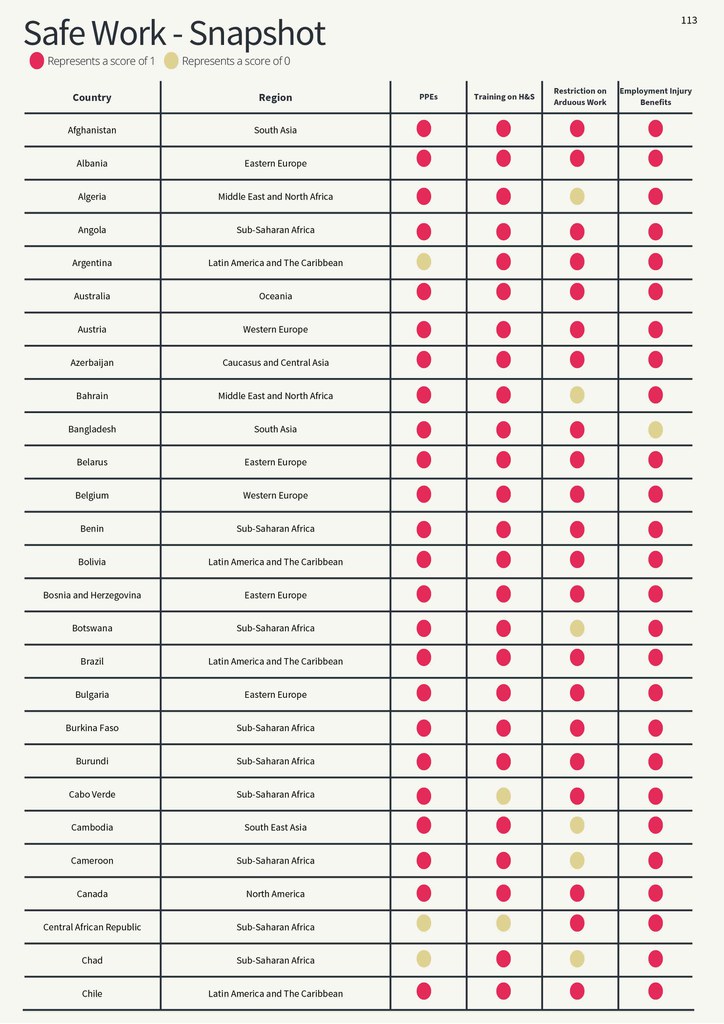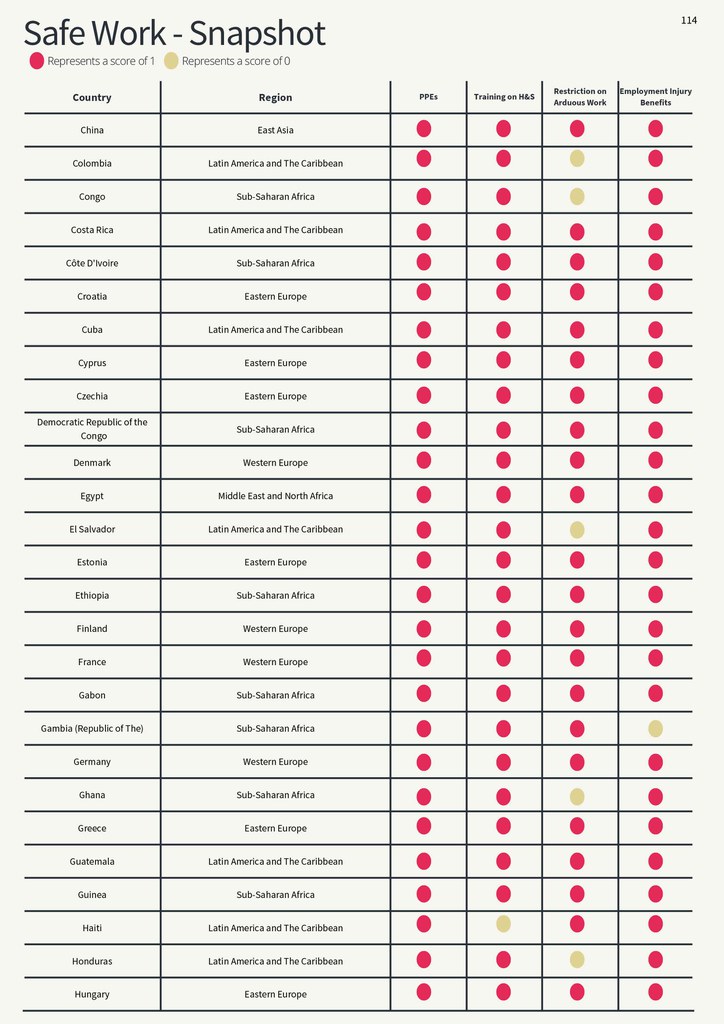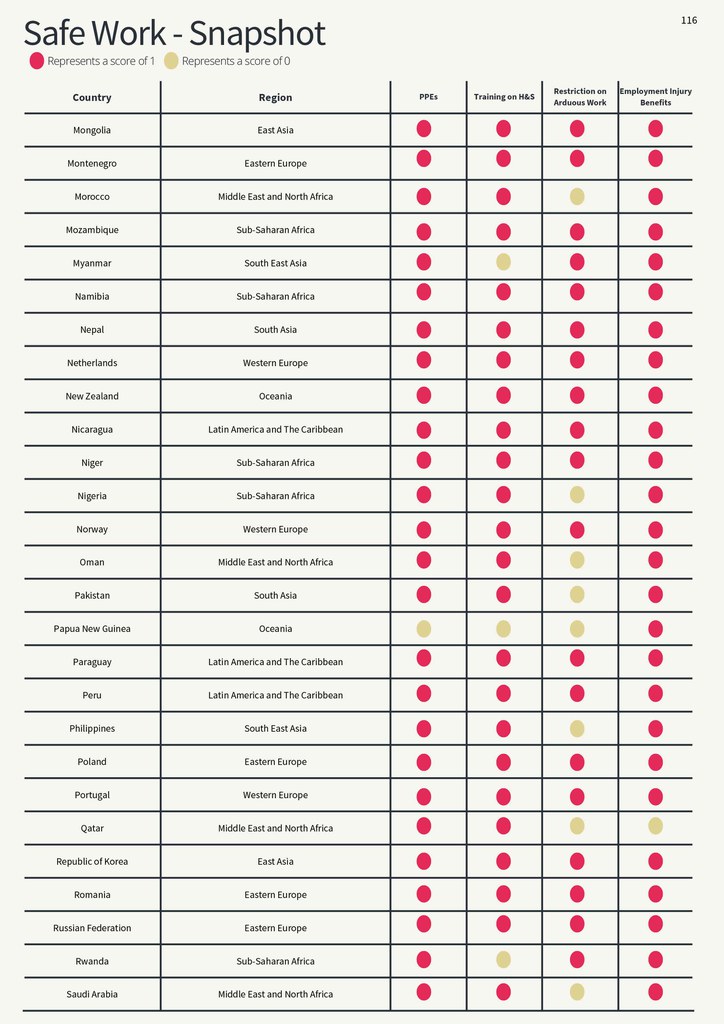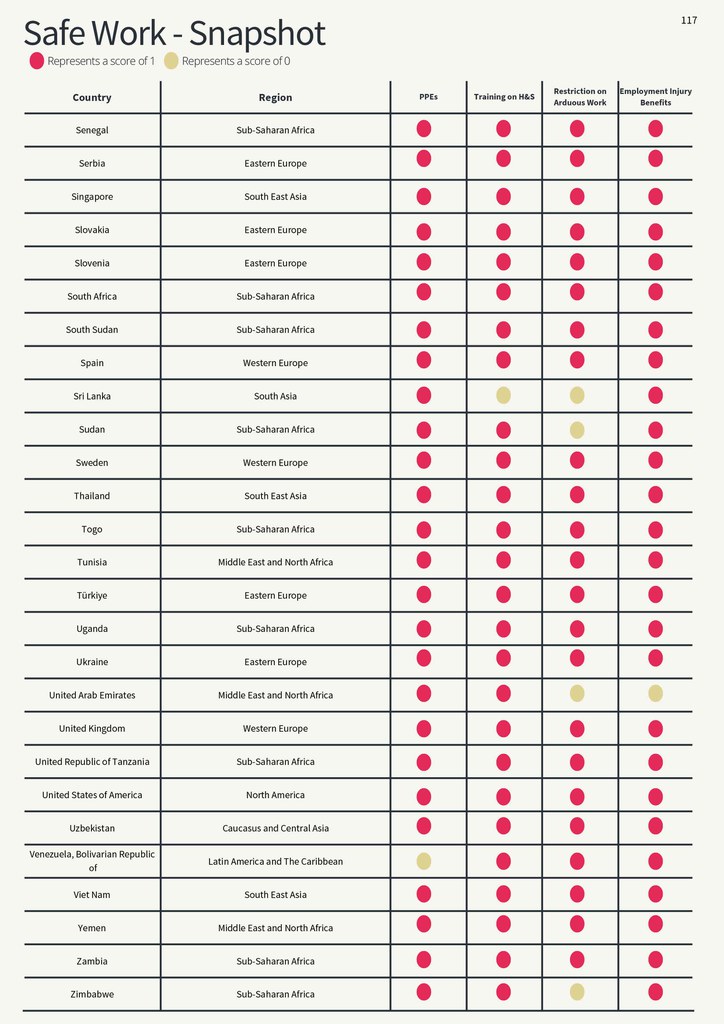Safe Work
Decent work, in essence, is safe work. The Safe Work indicator measures whether labour legislation ensures that workers are trained about health and safety issues before the commencement of work and whether the employer provides free personal protective equipment to workers.
It also measures countries' compliance on restrictions on arduous work for pregnant workers and whether countries provide some kind of employment injury benefits.
6.1 Free Personal Protective Equipment
Does the law require employers to provide free personal protective equipment to workers?
International Regulatory Standard
Article 16 of the Occupational Safety and Health Convention, 1981 (No. 155) states that employers shall be required to ensure that, so far as is reasonably practicable, the workplaces, machinery, equipment and processes under their control are safe and without health risk; and that the chemical, physical and biological substances and agents under their control are without health risk when the appropriate measures of protection are taken. Also, the employers shall be required to provide, where necessary, adequate protective clothing and protective equipment to prevent, so far as is reasonably practicable, the risk of accidents or of adverse effects on health. Furthermore, Article 21 of this Convention states that occupational safety and health measures shall not involve any expenditure on the workers.
Methodology
Whether the law requires employers to provide free personal protective equipment to workers:
1: Labour legislation requires employers to provide free personal protective equipment to the workers.
0: There is no requirement to provide free personal protective equipment.
95% of the 135 countries require employers to provide free personal protective equipment to workers.

6.2 Training - Occupational Safety and Health
Does the law require the employers to train workers on health and safety issues?
International Regulatory Standard
Article 19(d) of the Occupational Safety and Health Convention, 1981 (No. 155) mentions that there should be arrangements at the level of the undertaking/enterprise under which workers and their representatives in the workplace are given appropriate training in occupational safety and health.
Methodology
Whether law requires training on health and safety issues:
1: The law requires employers to provide health and safety training to workers when they join work or are assigned some new work.
0: The legislation does not require training on health and safety issues.
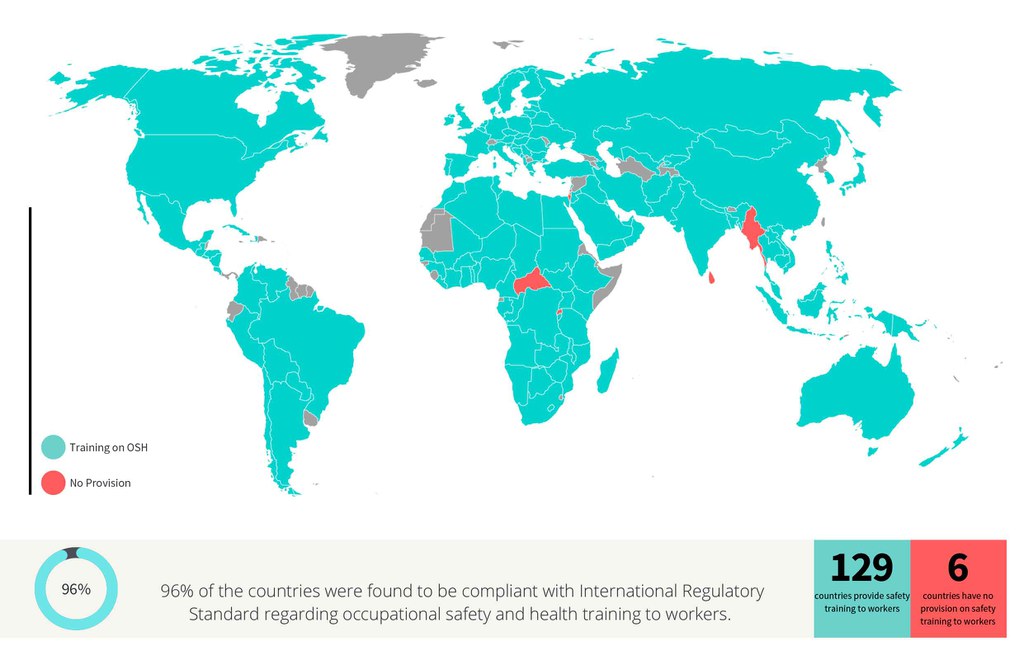
6.3 Restrictions on Work(for Pregnant or Nursing Women)
Does the law restrict work that is prejudicial to the health of the mother or the child?
International Regulatory Standard
From the Maternity Protection Convention, 2000 (No. 183), Article 3 states that after consulting the representative organisations of employers and workers, appropriate measures should be adopted to ensure that pregnant or breastfeeding women are not obliged to perform work which has been determined by the competent authority to be prejudicial to the health of the mother or the child, or where an assessment has established a significant risk to the mother’s health or that of her child.
Methodology
Whether law restricts work that is determined to be prejudicial to the health of the mother or the child:
1: The legislation restricts pregnant or nursing women from being obliged to perform arduous work and night work that is prejudicial to the health of the mother or the child. Based on the workplace assessment and medical certificate, legislation should require elimination of risk, adaptation of working conditions, transfer to another post without loss of pay, and access to paid leave when neither of the above is possible.
0: Arduous work and any of its other forms* are not restricted to pregnant or nursing workers, or there is a general prohibition only.
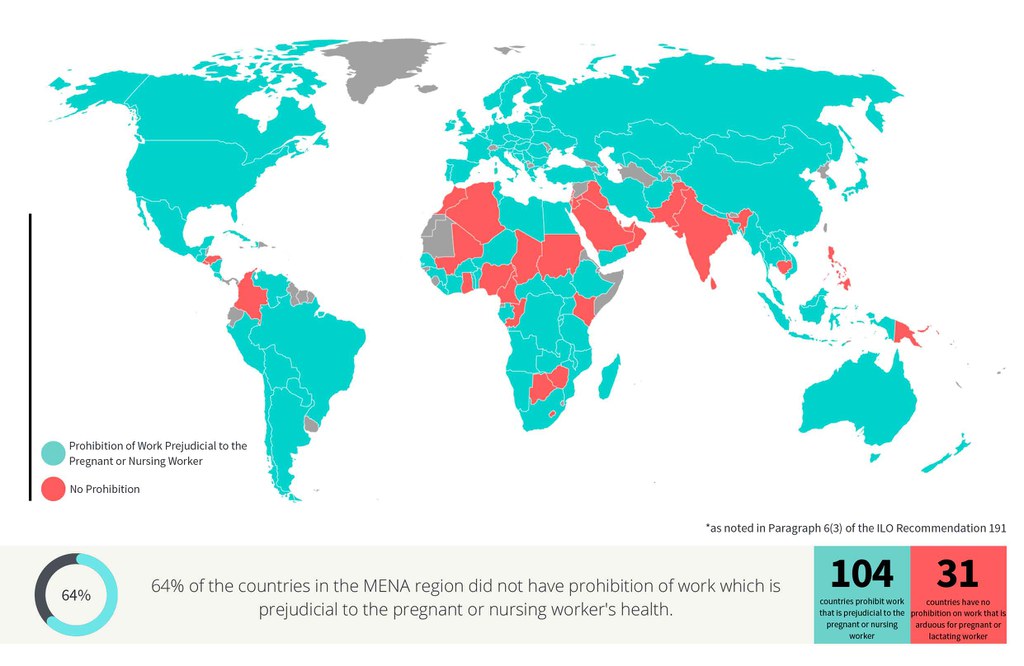
6.4 Employment Injury Benefits
Does the law provide for employment injury or disease benefits?
International Regulatory Standard
Social Security (Minimum Standards) Convention, 1952 (No. 102) stipulates the provision of employment injury benefits at the rate of at least 50 per cent (40 per cent for survivors) of a worker’s former wage. This applies to an accident or disease resulting from employment and the contingencies should cover a morbid condition; incapacity for work resulting from such a condition and involving suspension of earnings, as defined by national laws or regulations; total loss of earning capacity or partial loss thereof in excess of a prescribed degree, likely to be permanent, or corresponding loss of faculty; and the loss of support suffered by the widow or child as the result of the death of the breadwinner. In the case of a widow, the right to benefit may be made conditional on her being presumed, in accordance with national laws or regulations, to be incapable of self-support.*
Methodology
Whether legislation provides for employment injury benefits:
1: Employment injury or disease benefit is provided under the law and is paid through social insurance or where the employer pays a monthly premium to the private or public carrier (insurance provider) to provide employment injury benefits. 0: Employment injury benefit is not financed through the social insurance system (employer liability program only) or is not provided under the law.
3% of the 135 countries make employment injury benefits the employer's liability. Bangladesh, Gambia, Qatar and UAE require employers to pay benefits to workers injured on job.

Safe Work - Snapshot
